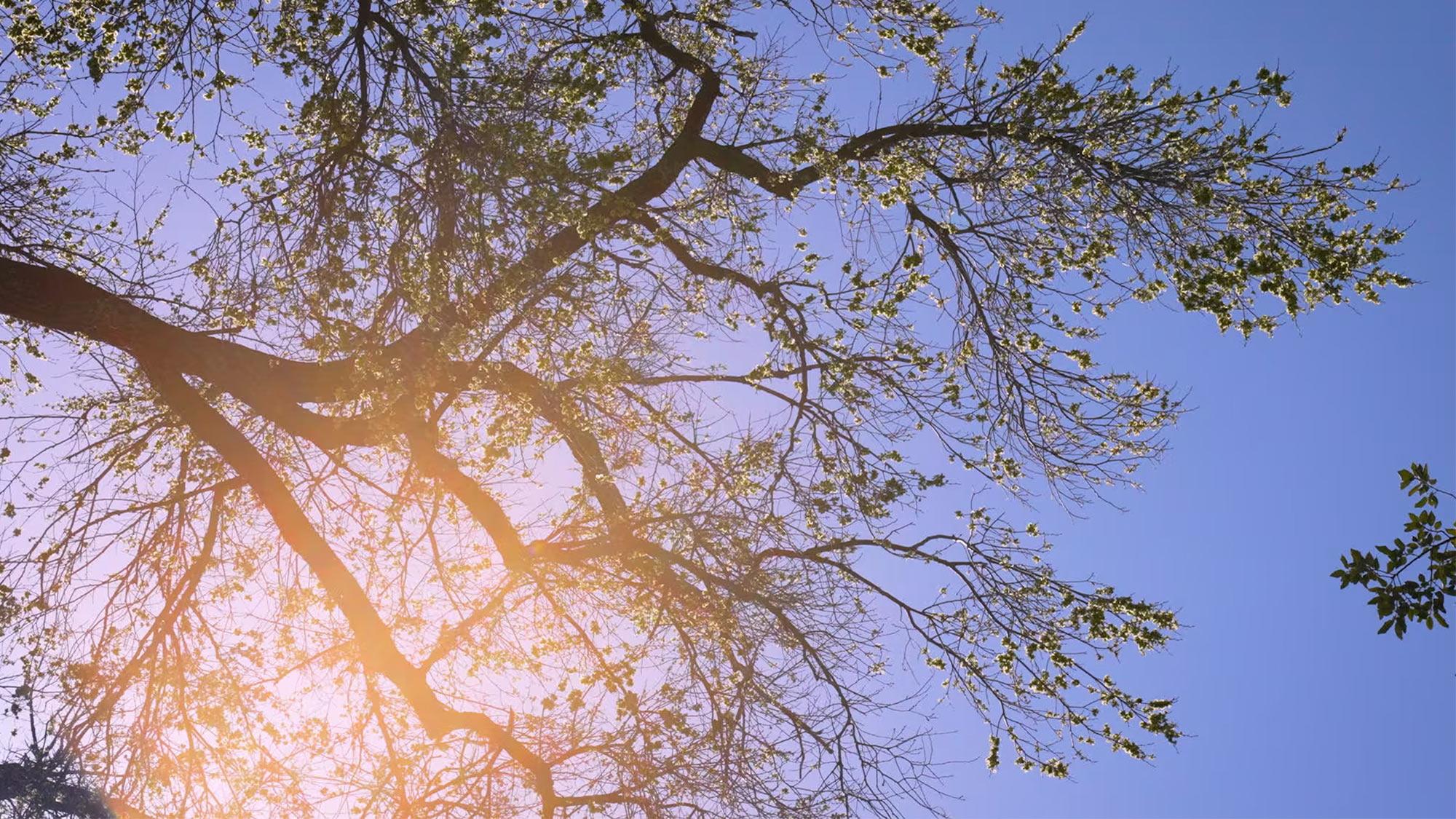The cooling shade of UC Davis’ mature, leafy trees impressed Nurjannah Wiryadimejo enough to help the now-graduating senior choose to become an Aggie.
“When I first came to Davis, what struck me was how beautiful the cork oaks are. I’d never seen such beautiful tree-lined streets like the ones by the Memorial Union,” she said.
“But now I’ve realized that a lot of the trees on campus aren’t well suited for the future climate, when there will be more heat and extreme weather events,” said the environmental science and management major.
In fact, a majority of the 20,000 trees on campus may be vulnerable to climate change and unsuitable to grow here by the end of the century — according to campus climate models and a tree assessment included in the UC Davis Living Landscape Adaptation Plan.
Wiryadimejo is part of a team of UC Davis students, employees, planners, researchers, landscapers and community volunteers who are working to help adapt the campus tree canopy for the next 100 years. They’re literally growing new knowledge from seed and using the campus as a living lab in a process that just might help our region find new favorite trees in climate-ready options that have rarely been grown here before.
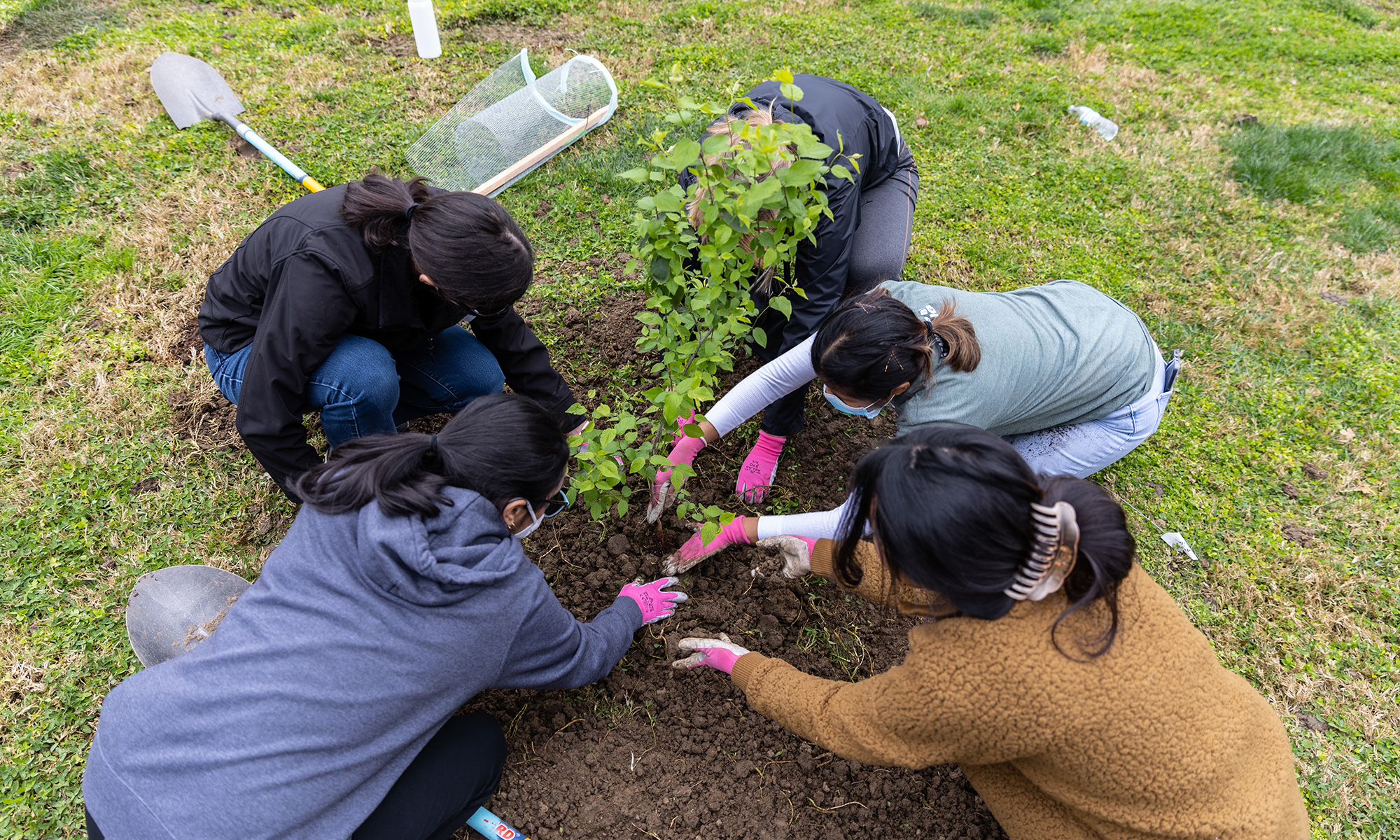
Identifying trees to plant
Until recently, if you wanted to know what type of tree to plant, your best bet might be to find a century-old tree that’s thriving nearby — and plant another one just like it. But as our climate changes, old bets are off.
“How a tree grew in the past is no longer a good predictor of its future success,” said Emily Griswold, senior staff horticulturalist for the UC Davis Arboretum and Public Garden for more than 20 years.
So finding trees that would be considered climate-ready for our region is a task in itself — and one that Griswold recognized her team might be particularly well suited for.
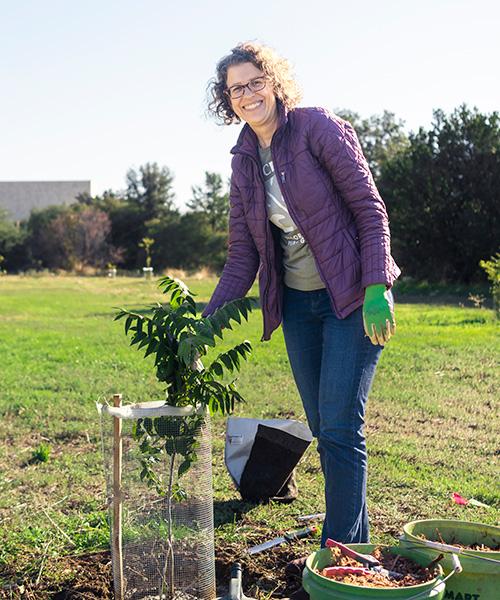
“The UC Davis Arboretum and Public Garden is in a unique situation to work toward solutions because we’ve been growing a diversity of trees for a long time, and we’re set up to experiment with them,” she said. “Our nationally accredited oak collection already serves as a living library of oak genetics and has already served this purpose in Northern California, where arborists can come collect acorns to try growing more heat- and drought-tolerant oaks.”
In looking to set up such an experiment, she found inspiration in two specific places: the state of Texas and a small research plot on the west side of campus.
Why Texas? From her oak conservation network, Griswold knew Texas has native trees not commonly grown in California that can survive through extreme weather events such as heat, drought, floods and winds as well as summer irrigation and alkaline groundwater — all practical considerations for growing conditions now and in the future here in Davis.
For aesthetics, Griswold points out that our current campus forest includes a lot of large trees with lush-looking canopies, but hotter climates often support desert trees that seem sparse with smaller leaves. Instead, she hoped to find tree options that could still look lush but are actually water-thrifty.
Studying strong, climate-resilient trees
The campus research plot is part of a 20-year study started in 2015 of promising tree species that are rarely grown in California cities, with researchers from UC Davis, UC Agriculture and Natural Resources and the U.S. Forest Service. The study is called “Climate-Ready Trees,” a phrase coined by this team that’s now being used by other researchers on this issue.
The UC Davis plot on Hutchison Drive is a reference site with a randomized, replicated planting of 12 species that were selected for drought tolerance, but also provide shade with low potential for root damage and have other qualities that make them promising for urban landscaping. As part of the study, four parks in the Sacramento region also host a mix of the trees in a patchwork of environmental settings to emulate the varied conditions of urban forests, with additional locations in Southern California as well.
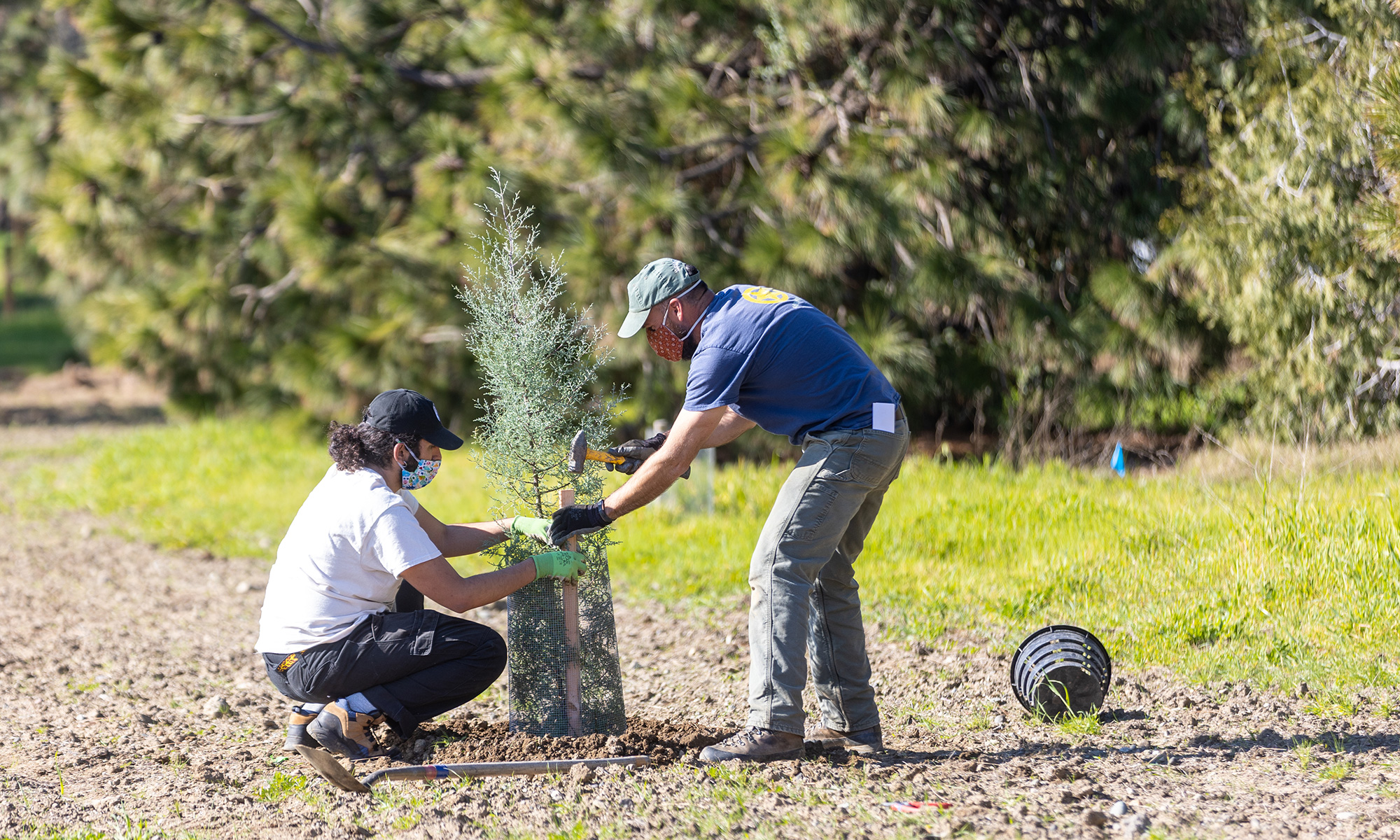
Alison Berry, professor emerita in plant sciences, is one of the lead researchers on the project and taught arboriculture for more than 30 years at UC Davis. She explained that by 2035 the trees should have grown mature architecture. Measurements over the years will be useful in understanding how these trees best fit into an urban forest. Trees in this study include varieties of acacia, osage orange, rosewood, mesquite, oak, palo verde and others from around the world.
Some of the trees are extraordinarily successful so far,” Berry said. “Even with no irrigation for the last five years and some terrible drought, there are a number of species that are doing extremely well. So I’m encouraged by that.”
Griswold and her team used this experiment’s design as inspiration to plan their own on-campus trial with trees they selected from Texas, following the model that all species would be replicated in a reference site and then planted in various campus landscape types, including irrigated landscapes, garden areas, unirrigated rural interface, roadsides and more.
“Having others build on our conceptual design and use it as a starting point is exciting,” Berry said. “We want to share; we want to build networks. If we could have tried 100 species instead of just 12, we would have.”
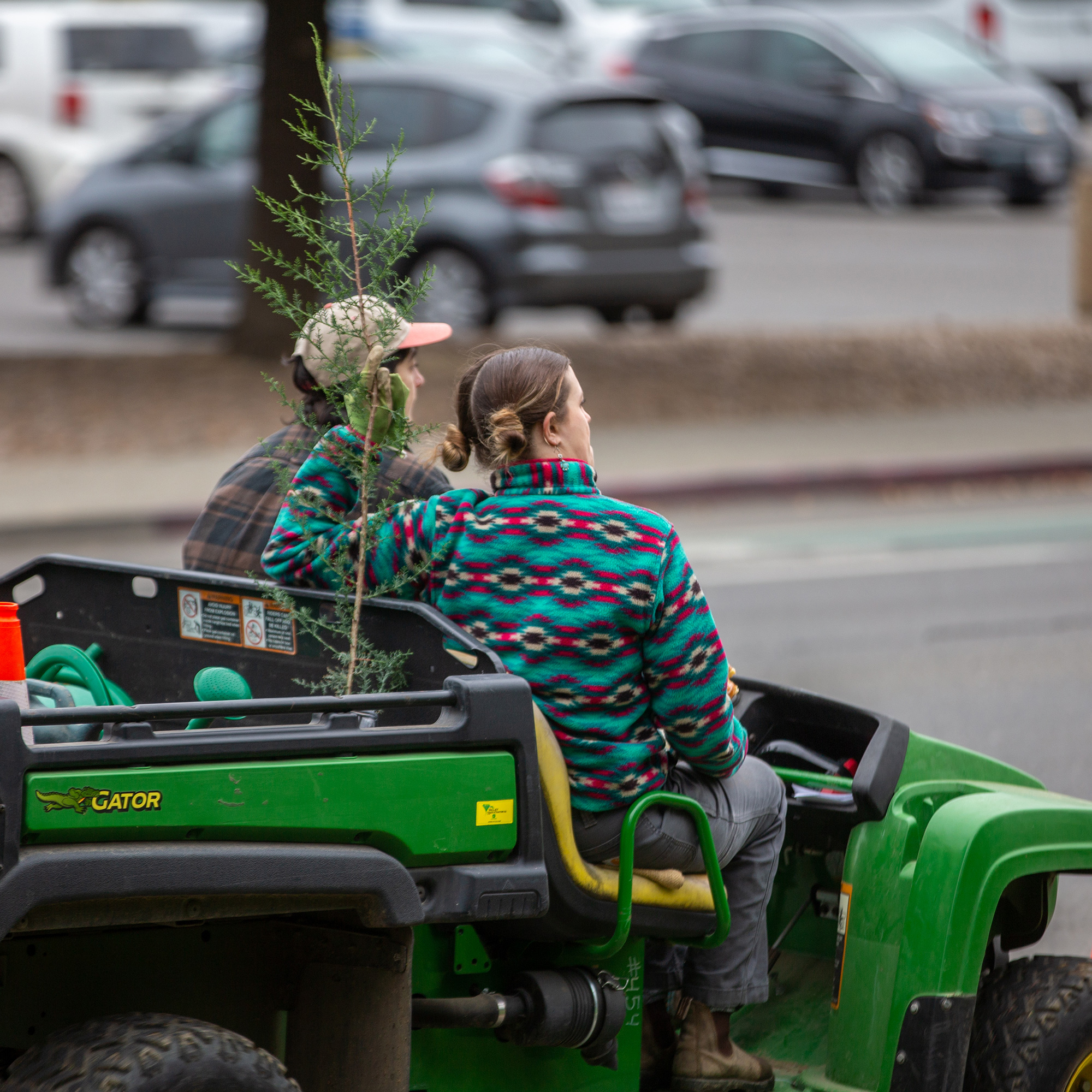

Students power the trial
In 2019, Griswold was part of a small team — including Abbey Hart, assistant nursery manager, and Ellen Sanders-Raigosa, a student apprentice — that collected plant material from more than 40 tree species in arid regions in west and central Texas to start propagating them back in the Arboretum nursery in Davis.
The only way that this is possible is because of our Learning by Leading internship team,” Griswold said. “Student interns have been involved in every aspect of this tree trial on campus.”
Students in the Arboretum and Public Garden's Learning by Leading™ program gain leadership experience while addressing real-world projects on campus, including landscape improvements, habitat restoration and environmental awareness.
For this tree trial, students on the Urban Tree Stewardship team in particular have been involved with propagating the seeds, growing seedlings, planting trees and training community volunteers to help plant trees.

Sam Vitt, a fourth-year environmental science and management major, cared for the trial’s “baby trees” in the nursery while she was an intern last year. This year she was promoted to co-coordinator of the team and helped teach this year’s interns about how to properly plant those trees throughout campus. In turn, the interns passed on their knowledge to community volunteers as they worked together to put trees in the ground at campus planting events.
The trial team set out to grow 12 trees each of the 40 Texan species around campus, including 118 trees in the campus reference site, which was fully planted in fall 2022. The reference site is on the north side of Old Davis Road near the visitor kiosk and across the street from the Robert Mondavi Institute teaching vineyard. Some of the more than 400 trees included in the trial are still in the process of being planted at dispersed campus trial sites.
“Walking through campus and seeing all the trees that have been planted and knowing that was led by our little team of 10 is really rewarding,” Vitt said.
The trial has been financially supported by multiple UC Davis funds, including individual donations made to the UC Davis Oaks Fund and the Learning by Leading Program Support Fund, in addition to the Saratoga Horticultural Research Endowment and the Green Initiative Fund.

Extreme weather uproots trees
At the New Year, the need for all of this planning and planting for tomorrow’s trees was highlighted in stark relief as extreme storms — including a bomb cyclone with violent winds — swept through campus, leaving in its wake 109 felled trees.
“Tree failures from the New Year’s storms far surpassed anything we’ve seen before,” said Tyler Kern, the campus urban forester and one of the Arboretum and Public Garden’s primary emergency contacts during the storms.
Though this year may have been better documented than years past, the closest comparison he knew of was the entire winter storm season of 2016 when 40 to 50 trees were damaged.
Kern also inspects campus trees each year to identify a list of dead, dying or diseased trees that need to be removed. Nearly 150 trees were removed this fall before the storms, a tall order for his team. He’s noticed some species and some locations have started to pop up on the removal list more frequently, which he takes into account when replanting. This year, he planned for about 130 trees to be planted (that’s in addition to the tree trials), primarily around heat islands where asphalt can further raise ambient temperatures after hot days.
“I wanted to replace those trees where shade could be the most beneficial on campus, so the benefits aren’t just for the people or vehicles occupying the shade itself, but also potentially for all of campus,” Kern said.

Expanding impacts and leaving a legacy
“Climate change, it’s such a dark subject,” said Vitt with a dramatic pause, noting that it’s a frequent topic in her major classes. “But it’s cool to know that we’re on the brink of this research that is going on for climate adaptation at one of the most sustainable universities in the world. It feels important.”
This is actually one of Griswold’s hopes for the trials — that students will know they can have a meaningful impact on climate change and on their communities through trees.
But the Arboretum and Public Garden team also is working to expand the potential impact of their climate-ready tree knowledge. For Texas trees that end up thriving on campus, the team plans to share information and propagation materials with the horticulture and nursery industries for commercial production — to benefit our region and eventually our backyards.

Griswold is also currently co-chair of a regional committee that is working to identify criteria for recommended climate-ready trees for Yolo County, along with other UC Davis tree experts and representatives from the cities of Davis and Woodland, TreeDavis, CalFire, the U.S. Forest Service and UC Cooperative Extension. She also speaks regularly on climate adaptation planning for public gardens in presentations to other garden managers, tree experts and campus planners throughout the nation, as more campuses and communities begin to grapple with their own climate change canopy challenges.
"It’s a very empowering message,” Griswold said. “It takes a challenge that can feel overwhelming and makes me realize that I have tools that I can offer to my community to help us adapt. People who work with trees and urban landscapes have an important role to play in continuing to make cities livable places for everyone.”
And as they prepare to graduate, students like Vitt and Wiryadimejo can know they’re making a difference on campus.
“I have this deeper understanding that I’m leaving a legacy behind,” Wiryadimejo said. “One day we’re going to come back here and these trees will be flourishing, and we’re going to be able to tell our kids we planted them.”
Related Stories

Can Trees From Texas Help Save our Campus Canopy?
Researchers traveled to Texas to collect hundreds of seeds from trees native to the hot and arid climate that could potentially thrive despite the increasing temperatures and extending drought conditions of the Sacramento Valley region.
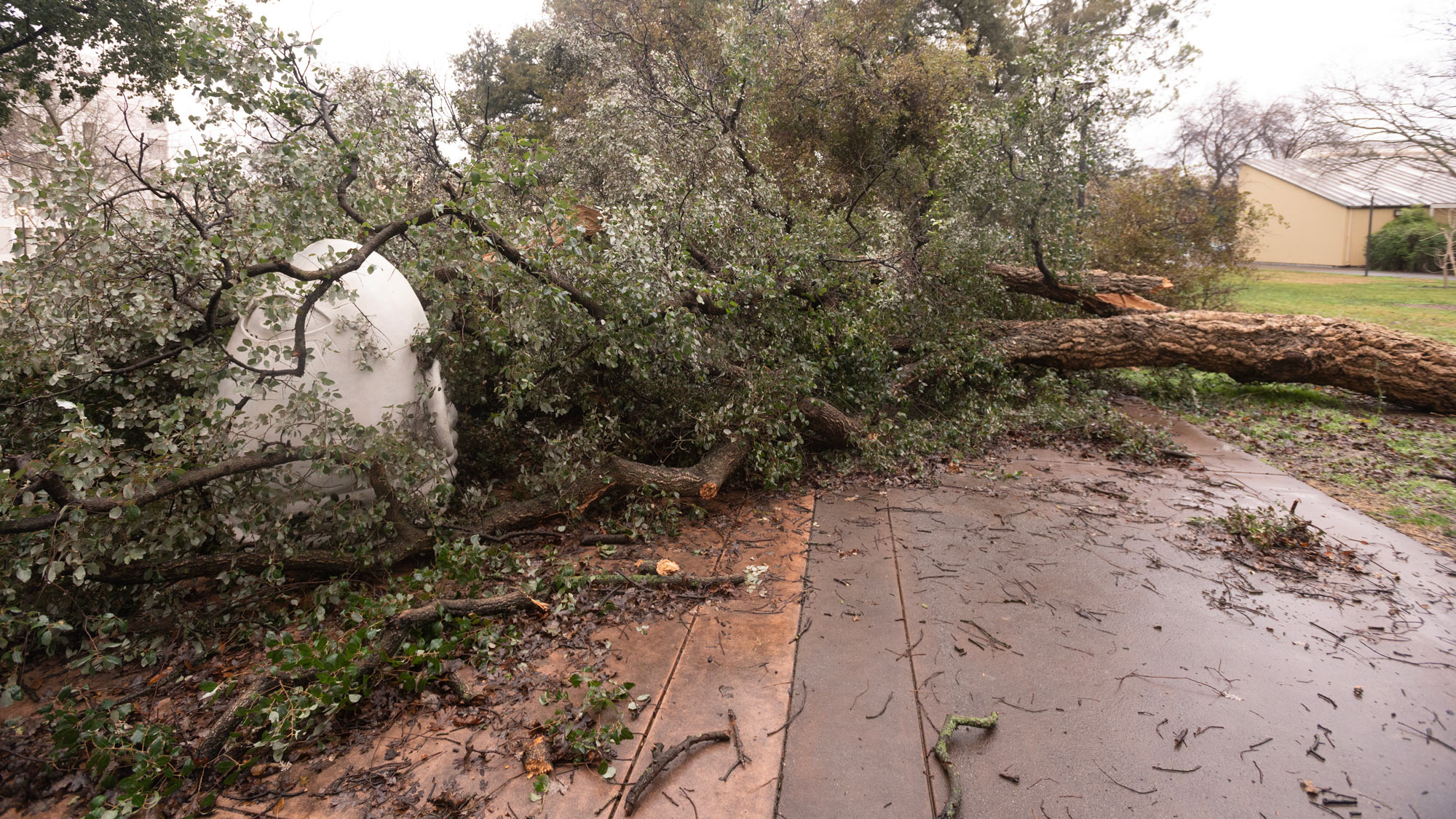
Trees Fall in Waves of Wind
Storms in early 2023 brought down trees across the UC Davis campus. Campus planners noted more evidence of the importance of their ongoing efforts to build a more resilient urban forest in the face of climate change and extreme weather events.
Media Resources
Media Contacts:
- Brenda Dawson, Finance, Operations and Administration, 530-752-7992, bldawson@ucdavis.edu
- Kat Kerlin, UC Davis News and Media Relations, 530-750-7931, kekerlin@ucdavis.edu
